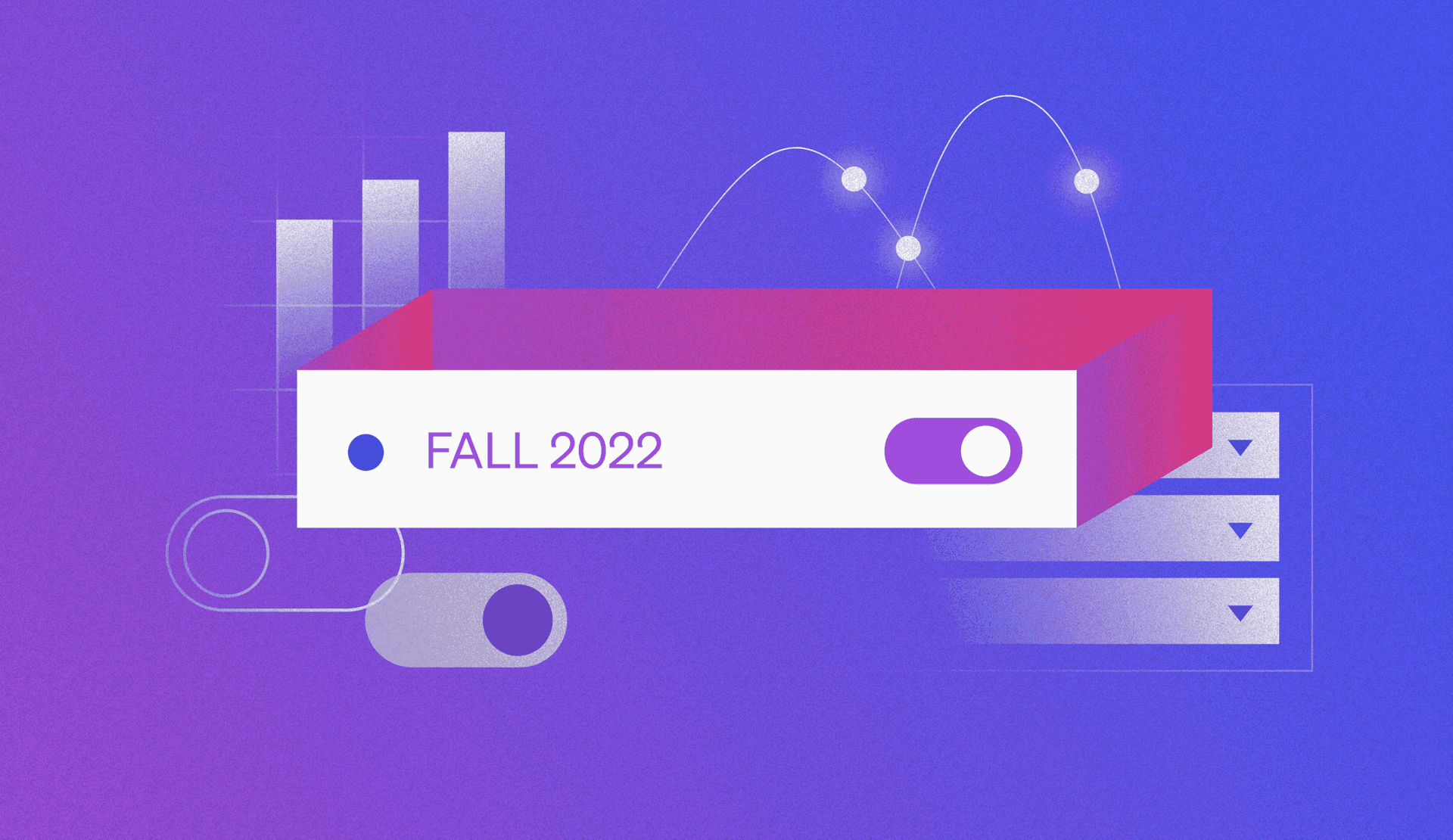Minimizing risk and maximizing value in software delivery
Since our last seasonal product update, we’ve been hard at work trying to raise the bar for feature management. This fall, we’re introducing updates across LaunchDarkly’s core flagging, experimentation, and automation capabilities aimed at helping teams both minimize risk and maximize value when delivering software. Read on to learn what’s new in LaunchDarkly.
Workflows
Feature Workflows is a set of capabilities that automates key parts of the software release process. It lays the foundation for standardizing efficient, low-risk launches. The following updates reinforce that foundation.
Automatically disable flags during maintenance windows and re-enable afterward
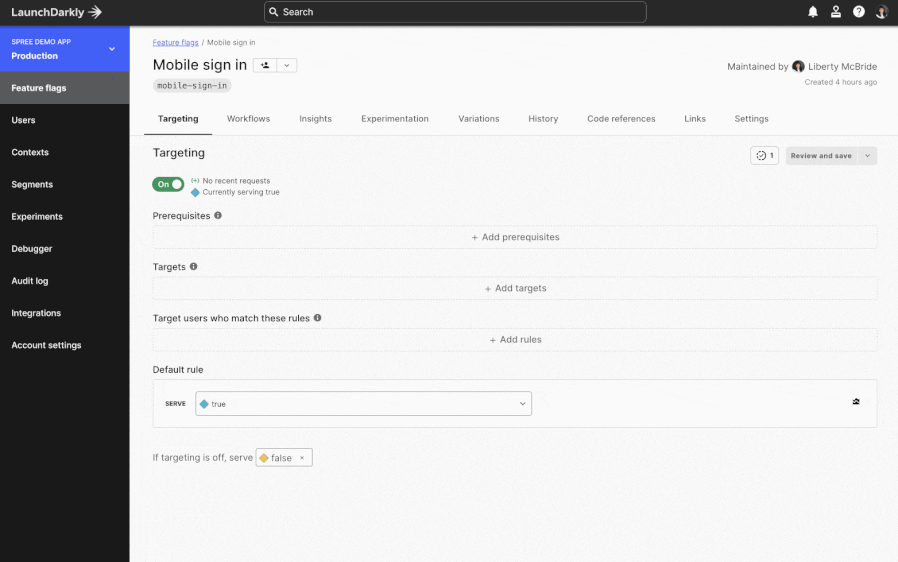
When you shut down parts of your application for maintenance purposes, you must temporarily disable relevant flags. Now, you can create a maintenance window and let LaunchDarkly toggle the flags off and on again for you. This helps minimize risk during maintenance periods. Learn how to disable and re-enable flags during maintenance windows here.
Review and approve feature changes with ease
Our Approvals feature minimizes risk by making it easier for the right people to review and approve code changes. Our latest updates make approvals even more seamless.
For example, we’ve enhanced the Slack notification for change approval requests to make it more informative. And we’ve added the ability to complete flag change reviews entirely in Slack, thus removing the need to context switch. Learn how to manage approvals in Slack.
In the near future, we’ll also be releasing an approvals dashboard, which will let you see and manage all the change requests across your organization in one place.
Experimentation
Our core platform has long given customers the safeguards to deploy and release faster. With our Experimentation offering, we help increase the value of these more frequent releases. Here are some of our latest investments in experimentation.
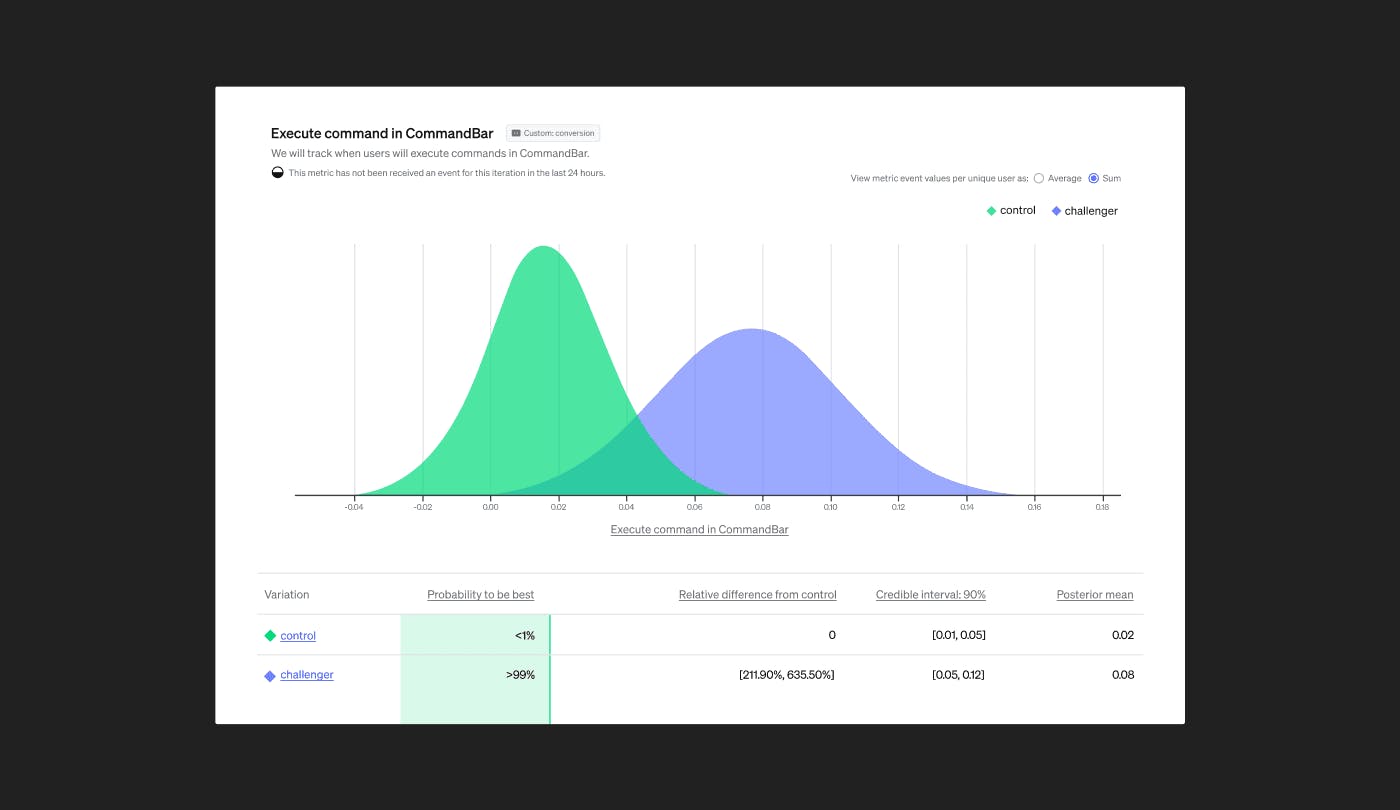
Visualize experiment results
Through elegant visualizations, we’re making it easier to interpret experiment results. Our visualization feature clarifies the lower and upper bounds of a result, helping you draw the right conclusions from complex datasets.
Avoid sample ratio mismatch (SRM) errors
When there is a statistical difference between the number of users you expect to receive an experiment treatment versus the actual number (i.e., a sample ratio mismatch), it compromises the integrity of your experiment. Our SRM test feature tells you definitively whether or not you have such a mismatch, thus relieving you from having to make that determination yourself. Learn how LaunchDarkly detects a sample ratio mismatch.
Reduce friction when importing metrics
Our new Metric Import API cuts down on manual, duplicate work when importing metrics for experiments into LaunchDarkly from other data sources and systems. Create and run experiments in less time. Learn how to import metrics into LaunchDarkly for experiments.
Core flagging platform
Flag defaults: Create and reuse optimal flag configurations
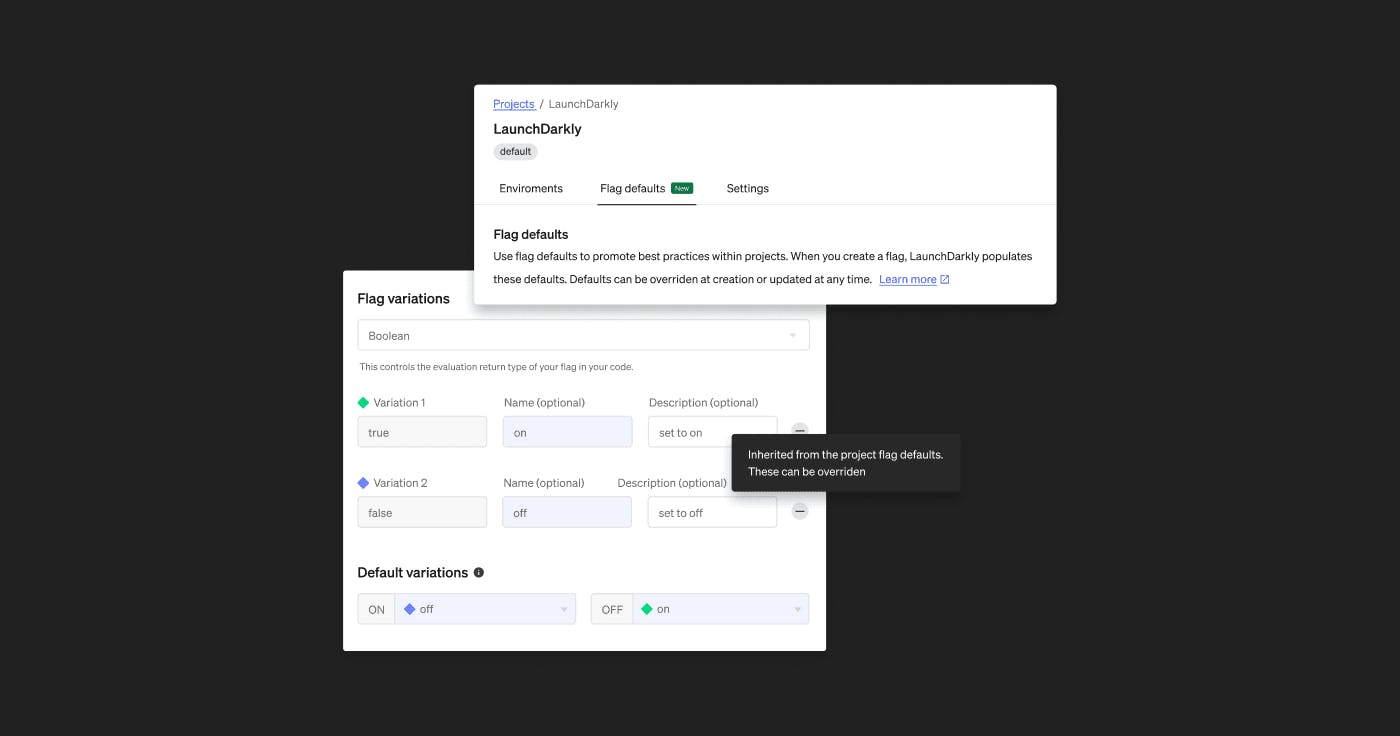
Creating flags at scale can be tedious, repetitive, and error-prone. Flag defaults cuts down on the tedium and errors. It allows you to set flag configurations that embody best practices—and then reuse those configurations across multiple projects. This speeds up flag creation, removes uncertainty, and reduces risk. Learn how to use flag defaults.
Helm Chart: Cut down on upfront work when using Relay Proxy and Kubernetes
Customers use LaunchDarkly’s Relay Proxy (a Go application) to reduce outbound connections to LaunchDarkly, limit redundant database traffic, and work with large segments. Traditionally, using the Relay Proxy for a Kubernetes-based deployment required a fair amount of initial effort. LaunchDarkly’s Helm Chart greatly reduces the manual work in such scenarios. Learn more about the Relay Proxy Helm Chart.
Cloudflare integration: Greater flag evaluation speeds in your edge

LaunchDarkly’s Flag Delivery at Edge capability already enables extremely fast client initialization times, connection speeds, and flag evaluations. Our Cloudflare integration takes this a step further. It lets you evaluate flags in your network edge rather than ours, thus unlocking even greater flag evaluation speeds than before. Learn more about the Cloudflare integration.
Scaling LaunchDarkly to teams of teams
Our teams features help enterprise account administrators manage their organization’s use of LaunchDarkly, especially at large organizations with thousands of members and hundreds of projects. We’ve made several updates to teams, including the ability to assign teams as flag maintainers, assign users or groups defined in your Identity Provider to teams in LaunchDarkly, manage teams in Terraform, and more. Learn more about our latest teams updates.
On the horizon
Custom contexts: Take targeting (and user experiences) to new heights
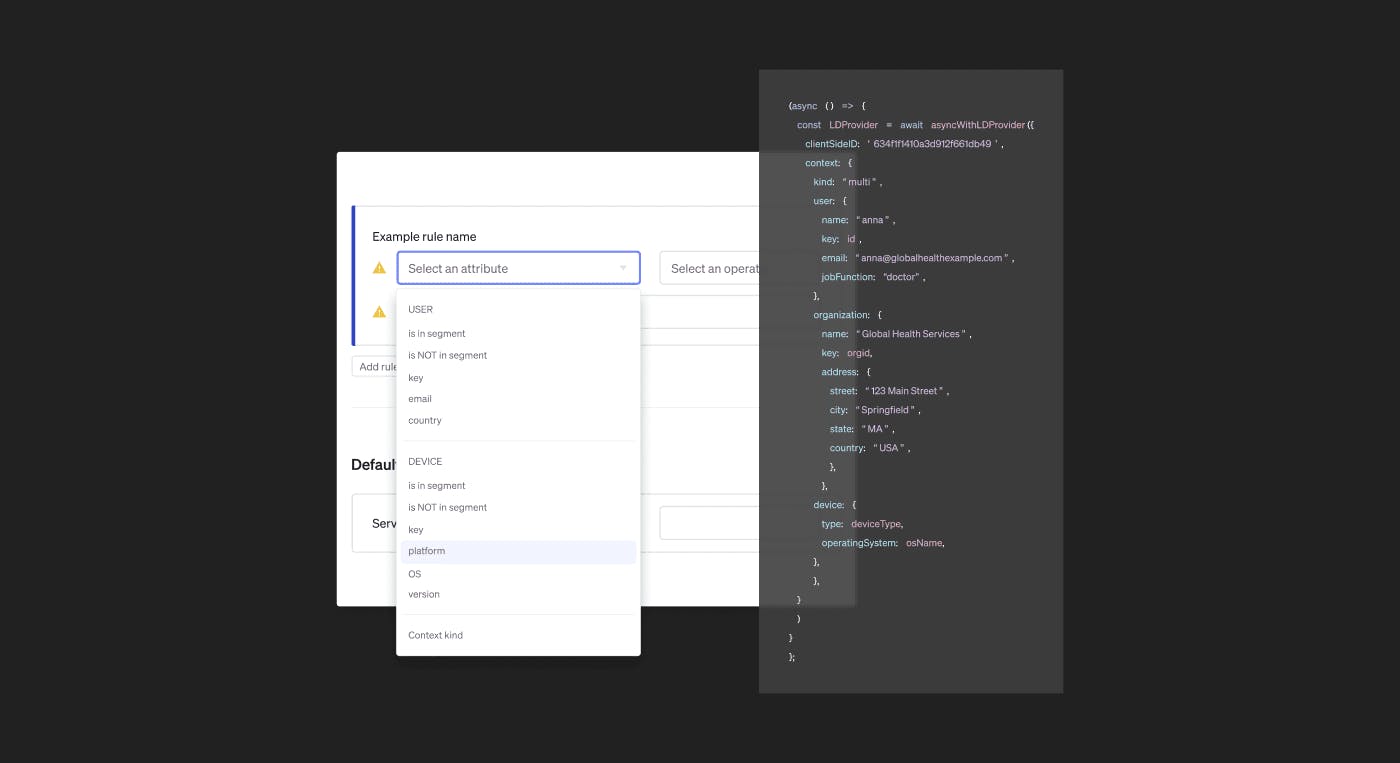
Historically, targeting actions in LaunchDarkly have revolved around “users”. For example, when targeting a feature to a specific audience or endpoint, the endpoint is always defined as a user—even if you want to target based on the custom context mobile_device. We recognize you often need to target more than just users. That’s why we’re building custom contexts.
In an intuitive, first-class way, custom contexts will let you deliver software to users (of course) as well as the contexts of your choosing: devices, organizations, geographies, facilities, stores, and more. By aligning with your data model, we’ll reduce confusion, errors, and associated risks when leveraging flags and experiments in LaunchDarkly. And we’ll unlock powerful new use cases like multi-context targeting.
We’re planning to release an early access version (EAP) of custom contexts this December. Apply for early access to custom contexts.
Accelerate: Measure and improve your software delivery performance
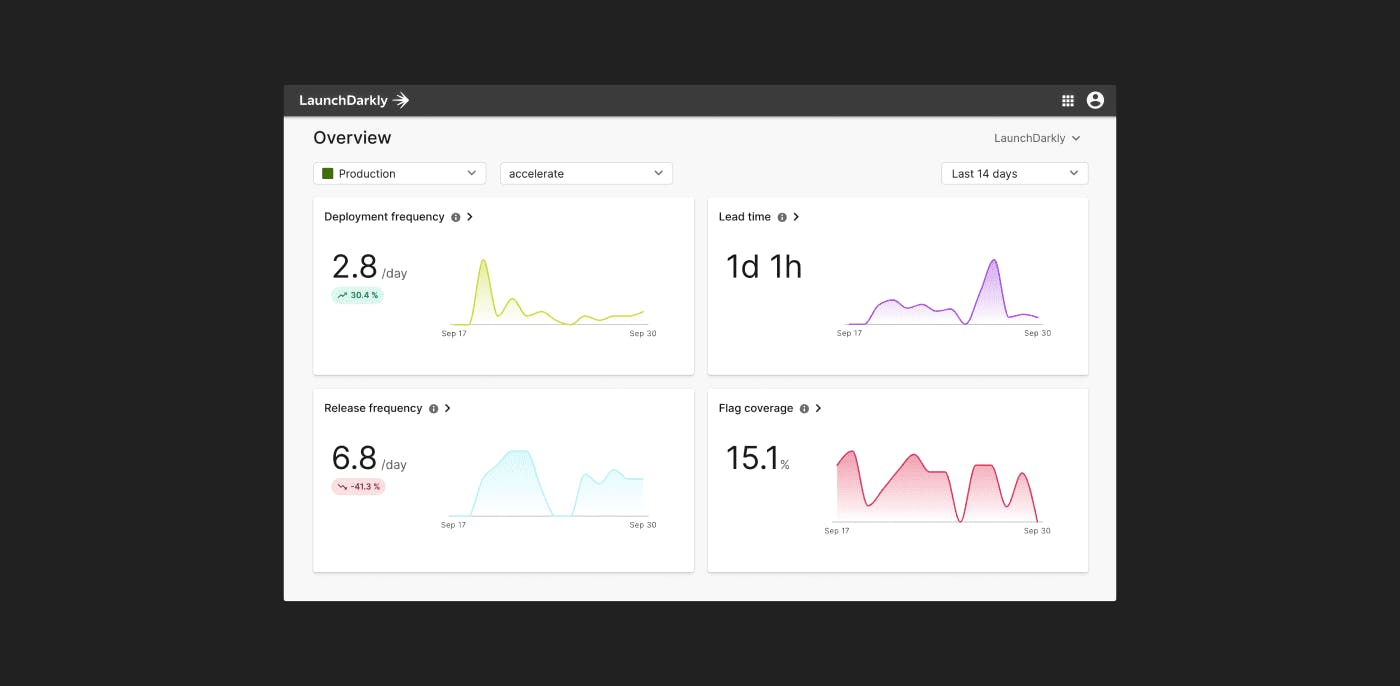
Engineering leaders want to measure software delivery performance and reliability across teams. To meet that demand, we’ll be launching a new product: Accelerate. Currently in EAP, Accelerate lets you track and visualize key engineering metrics such as deployment frequency, release frequency, lead time for code changes, and flag coverage.
Unlike other similar solutions on the market, Accelerate treats deployments and releases separately. That is, it measures the rate of value delivery (i.e., release frequency). Accelerate also shows how many pull requests include feature flags, helping you correlate flag usage with software engineering performance.
If you'd like to stay on top of all LaunchDarkly product updates, join our early access program or visit the "What's New" section of our blog. Or, if you’re feeling adventurous, do both.


